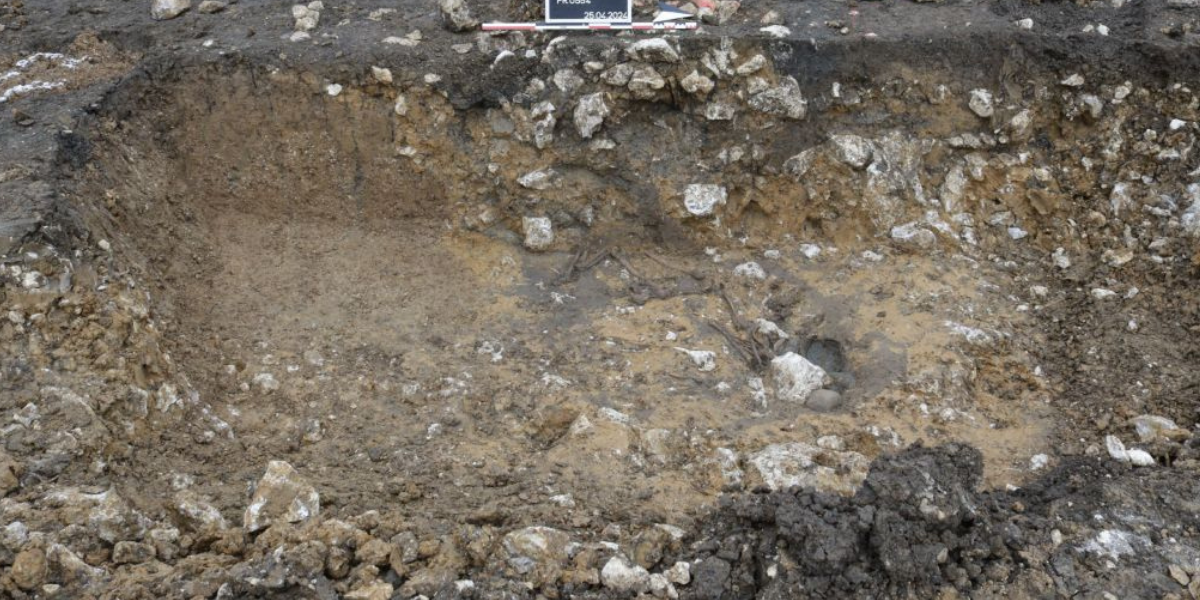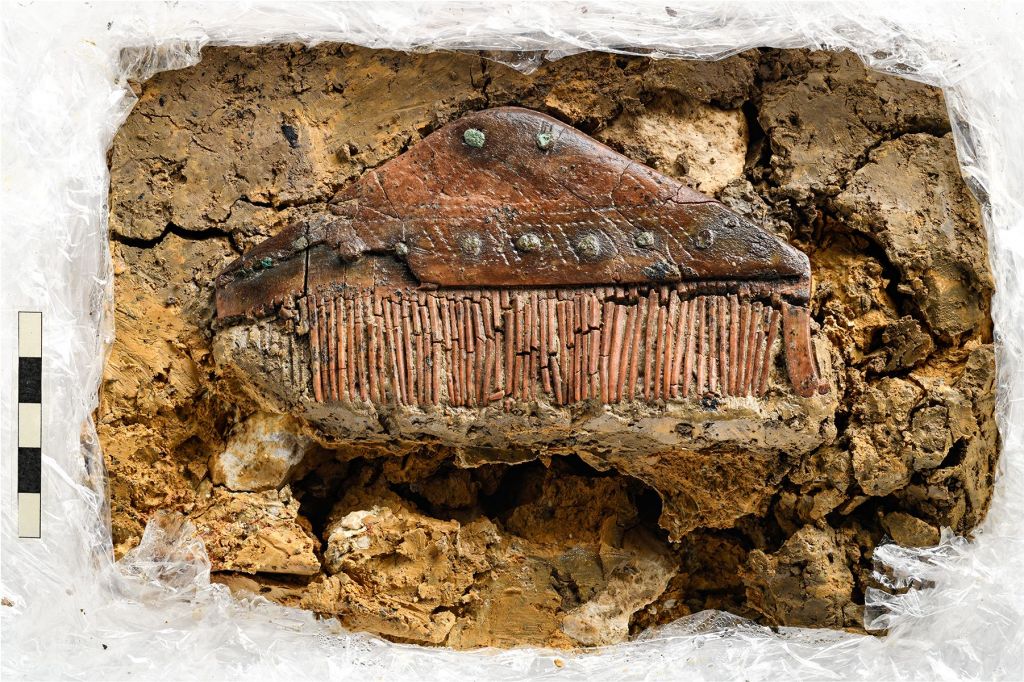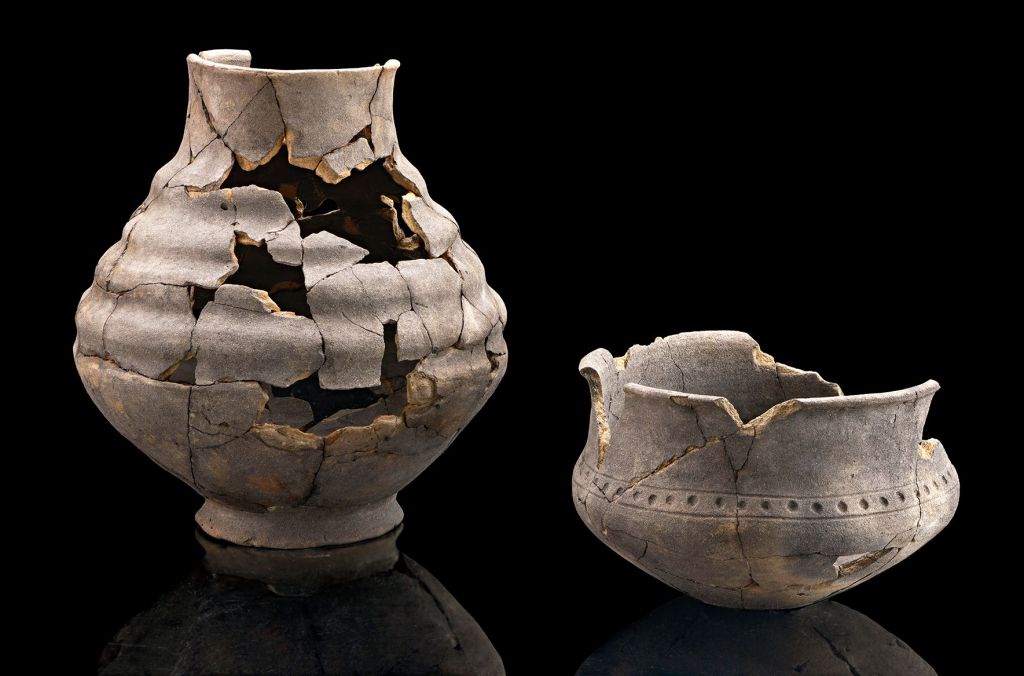
A well-preserved comb was discovered in a unique fourth-century Alemannic chamber tomb in Germany
A rare Alemannic chamber tomb dating back to the early 4th century has been unearthed during a rescue excavation in the center of the village of Gerstetten in the Heidenheim district in southwestern Germany.
The excavation was carried out by the archaeological specialist company ArchaeoBW on behalf of the State Monuments Conservation Office (LAD) of the Stuttgart Regional Council.
The excavation was initiated as part of a rescue operation in preparation for a new housing development project in the area.
The Alemanni were a powerful Germanic tribe who lived in southwestern Germany and eastern France. They settled between the Rhine and the Black Forest. Active between the 3rd and 5th centuries, the Alemanni were known for their warrior culture.
They often came into conflict with the Roman Empire and played an important role in its downfall.
While they practiced agriculture, they also had a warrior culture. They had pagan beliefs.
Their name is still associated with the region of Alsace in modern-day France.
The area where the tomb is located is rich in history, with deep connections to ancient Roman and early Germanic cultures. The village center where the tomb is located has been continuously inhabited since Late Antiquity.
The tomb, located in the village center, was built as an elaborate wooden chamber and contained the skeletal remains of a man approximately 60 years old.

Radiocarbon dating places the tomb between 263 and 342 AD and is characterized by its solitary location, a typical feature for tombs from this period.
Among the objects found in the tomb were ceramic and glass vessels, a high-quality glass vessel and an amazing small comb with all its teeth and handle practically intact.

The glass cup is believed to have come from the nearby late Roman fortress of Gultia (present-day Günzburg). Other grave objects have clear similarities with discoveries in the central Elbe-Saale region.
After the excavation, the artifacts were taken to the LAD restoration workshop in Esslingen for additional examination and conservation. The excavation team is currently documenting the remaining finds, including human bones, and two ceramic vessels have already been restored.
Although the area to the south of the current excavation site has not yet been investigated, the Stuttgart Regional Council has expressed hope that more graves may be found there.
Archaeological research in the area is scheduled to continue at the end of the year.
Cover Photo: ArchaeoBW / State Office for Monument Preservation in the Stuttgart Regional Council
You may also like
- A 1700-year-old statue of Pan unearthed during the excavations at Polyeuktos in İstanbul
- The granary was found in the ancient city of Sebaste, founded by the first Roman emperor Augustus
- Donalar Kale Kapı Rock Tomb or Donalar Rock Tomb
- Theater emerges as works continue in ancient city of Perinthos
- Urartian King Argishti’s bronze shield revealed the name of an unknown country
- The religious center of Lycia, the ancient city of Letoon
- Who were the Luwians?
- A new study brings a fresh perspective on the Anatolian origin of the Indo-European languages
- Perhaps the oldest thermal treatment center in the world, which has been in continuous use for 2000 years -Basilica Therma Roman Bath or King’s Daughter-
- The largest synagogue of the ancient world, located in the ancient city of Sardis, is being restored











Leave a Reply